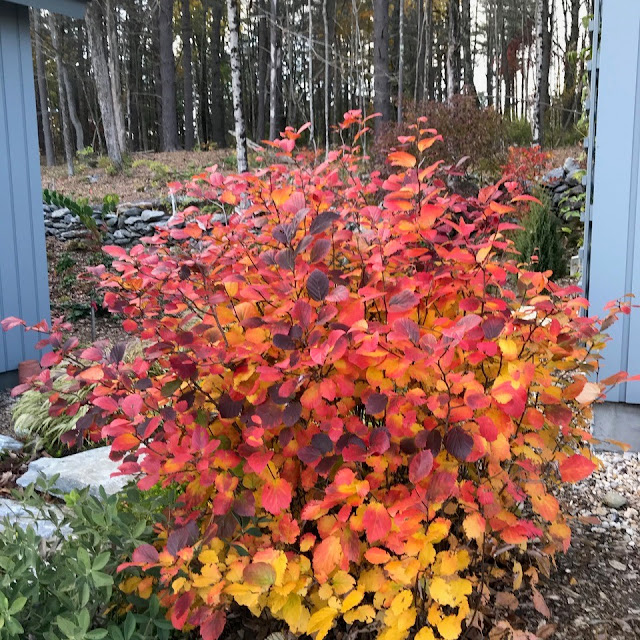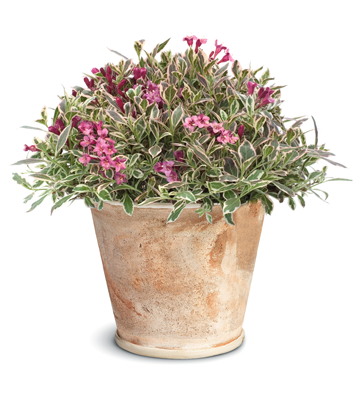I would have thought, off the top of my head, that there were a lot of shrub species that had fantastic fall color, but when I drove our trial fields searching, I was dismayed that only a limited number of species really stood out with bright autumn hues. Of course everyone thinks of burning bush as the quintessential fall color shrub, but there has to be more. What else is there to use?
With a bit of thought, I came up with a list of six outstanding shrubs that can add fantastic fall color to your landscape. They're in no particular order, but they're all excellent plants that are worthy of a place in your yard, nursery, or landscape design. Each has its own unique hue of fall foliage color, from blends of bright orange to bold purplish reds. And unlike Euonymus alatus, they're all North American natives.
1. LEGEND OF THE FALL® Fothergilla
Fothergilla has always been appreciated for its spectacular autumn color, but Legend of the Fall® fothergilla sets a new standard for the species with brilliant, glowing hues of orange, yellow, and red. Spring brings a crop of fragrant white flowers. This plant was also selected for its improved production performance, a boon since this plant will surely be in high demand by landscapers and garden designers.
USDA Zone 5-9 (-20°F/-28.9°C)2. LOW SCAPE MOUND® Aronia melanocarpa
Just as The Great Gatsby is a classic of American literature, H. quercifolia is a classic North American native hydrangea. Long prized by savvy gardeners for its flowers and fall color, this sophisticated shrub deserves a wider market. Gatsby Pink is a remarkable oakleaf selection from Powell Gardens of Kingsville, MO. It boasts big, showy lacecap blooms that quickly transform from pure white to a delightful pink. The dark green foliage turns mahogany-red in autumn. It also reblooms a bit as well.
USDA Zone 5-9 (-20°F/-28.9°C)
Ok, so I cheated and added a seventh shrub, but it is so worth it. Rhus typhina, the Staghorn sumac, is one of my favorite native shrubs because it is one of the first to change color. The plant has fuzzy stems (like a stag’s horn), great orange to deep red fall color, and attractive red seed heads. I learned this plant as a young boy when my dad taught me how to make staghorn lemonade with its fruit—look it up. It’s commonly found along highways, forming dense clumps. At 70 mph, it's easy to see that each clump differs genetically in size, fall color, and fruit. Unfortunately, as it is a suckering plant that moves around a bit, most gardeners don’t have the room for a clump in their garden. Still, it does deserve greater use. There are several excellent cultivars that are garden worthy; ‘Disecta,’ aka ‘Laciniata,’ is grown for its attractive lacy cut leaves. Tiger Eyes or ‘Bailtiger’, is a yellow leafed selection of ‘Disecta’. This plant has all the wonderful attributes of the species but with bright yellow leaves that give summer-long interest.














